Newsletter January 2021
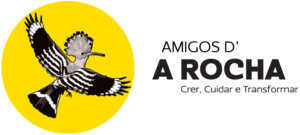
 Welcome to our January Newsletter.
Welcome to our January Newsletter.
A New Year is here and hopefully it will bring with it a positive way forward with a vaccine that will help combat the Covid 19 Virus.
We wish you a year of good health and happiness,
Happy New Year!
Please support us financially this year if you can by using the link below
Helen e Filipa
S
N
A
P
SHOT

Manuel Teixeira Gomes
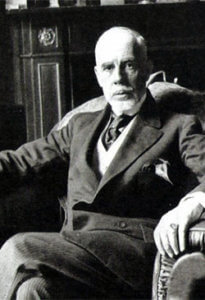
7th President of the First Portuguese Republic: 1923-1925
Born: 26th May 1860, Vila Nova de Portimão
Died: 18th October 1941, Algeria
He is the most famous citizen of Portimão, which is where he was born and raised until the age of 10 years when he left to go to Coimbra to study at a Seminary. Son of a local rich family which had a dry fruits trade which was an international business; when he was 15 years old, he enrolled at the University of Medicine in Coimbra. He did not finish his studies but gave up, against his family desires, and settled in Lisbon. Here he started to go the National Library and became friends with several famous poets and writers of the time. After finishing his military service, he went to Porto and dedicated his life to the arts, mainly to literature, he met important writers and philosophers and started to write for some famous local newspapers: First of January (Primeiro de Janeiro) and New Leaf (Folha Nova).
Tired of the city life, he came back to Portimão to his family. In 1891 he started to work in a company that exported Algarve dry figs, it was a business partnership of his father and other local businessmen. His job was to increase the export market, and he spent the most part of his time travelling around Europe, North Africa and Asia Minor. In 1899 he publishes his first book, June’s Inventory (Inventário de Junho). After some years and with his father getting older, his travelling’s gets less, and he has more time to write. In 1904 works published were Letters with No Moral (Cartas sem moral nenhuma) and Blue August (Agosto azul) and three more books by 1909.
As a young man he was a democrat and republican and wrote in the political newspapers. After the Implantation of the Republic in 1910, he was invited to be minister for Portugal in London and in 1919 in Spain; in 1922 he was designated Deputy for the Nations Society and occupied the position of Vice-president. He was elected President of Portugal in 1923 and resigned on the 11th of December of 1925, due to the political, social and military unrest.
Manuel Teixeira Gomes left from Portugal in 1925 and settled in Algeria in 1931, where he spent the rest of his life.
IFO’s – Identified Flying Objects…
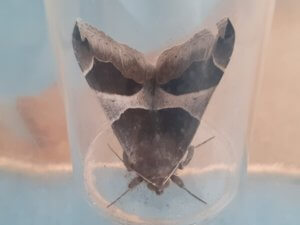
Passenger (Dysgonia algira, Linnaeus, 1767)

Morphology: It is a macro moth from the Noctuidae Family; with a wingspan between 40 and 46 mm. The forewings are dark brown with a whitish median band narrower in the middle, broad pale margin and two dark spots in the apical area; the hindwings are fuscous brownish with a pale line in the middle. The background colour can vary from medium to dark brown sometimes with a purplish tinge. In the Southern range normally two generations, April/May and July/September.
Habitat: Scrub and woodlands, warm places with brambles.
Distribution: Northwest Africa, Southern Europe to Western Asia.
Notes: The caterpillar feeds on different plants, like Brambles, Willow, Castor-oil-plant and Pellitory-of-the-wall. The species overwinters as pupae and the adult can migrate.
Tweet… Tweet…

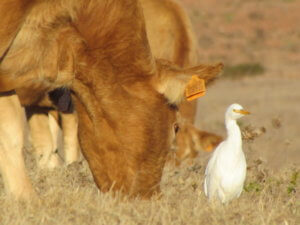
Cattle Egret (Bulbucus ibis, Bonaparte, 1855)
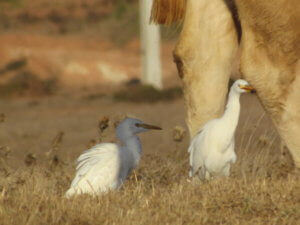
Identification: It’s a medium size bird from the Ardeidae Family. The plumage is almost entirely white with orange patches on the crown and breast (only in spring); the bill is wide, strong with a yellow colour, becoming reddish in spring; the legs are dark, becoming yellowish in spring; the neck is short and thick. Males and females are alike.
Habitat and Ecology: Inhabits open grasslands, livestock pastures, ploughed fields, rice fields, wet pastures, dry arable fields and irrigated grasslands; it can be found far away from water and together with cattle (cows, sheep’s and horses). Breeds in colonies and builds its nest on top of tall trees. In the end of the day, they return to their roosting places (feeding areas can be quite distant from roosting places). Their diet consists mainly of insects (grasshoppers, beetles), spiders, crustaceans and amphibians.
Distribution: Native from South Europe and North Africa is now distributed also in America, Africa and Australia continents. First recorded in the American continent at the end of the XIX century, at the same time it started to expand in Africa. In Portugal it is present all the year and its more common South of the Tagus River during the breeding period.
Threats: Least Concern (LC) in the International Union for Conservation of Nature (IUCN) red list. This species can affect the trees it uses to build its nets, which may lead to colony abandonment. The major threats are wetland degradation and destruction and pesticide poisoning.
DID YOU KNOW?
- On the 26th November A Rocha took part in a “Butts Hunt” activity organized by LPN (Portuguese Ligue for Nature); we collected almost a 1.5
 litre bottle full of butts on the Alvor Estuary.
litre bottle full of butts on the Alvor Estuary. -
Don’t forget this month starts the campaign Plastic Free February, to reduce the amount of plastic we use. First step starts now by selecting and separating the plastic rubbish from other rubbish to be able to measure the amount of plastic we use on the first 28 days of January. See here for more information.
- This year due to the pandemic, the number of volunteers decreased considerably. Although there were still a few who came to help. THANK YOU!
- Susanne Vogel, 31 years old, Dutch “I studied forest and nature conservation and anthropology for my BSc and MSc in the Netherlands
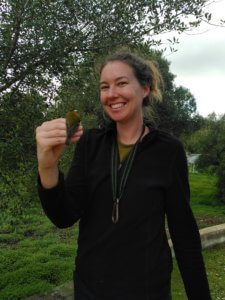 (Wageningen University and Leiden University) and then I did a PhD in zoology in the UK (University of Oxford). I grew up in a harbour city in the Netherlands, but despite the urban environment I was keen on animals and plants. At the end of high school, I became interested in issues around high elephant populations in South Africa and wanted to study complex situations where the conservation of threatened species and human interests seem to compete. Since then I combined studies and research projects in anthropology and conservation science and worked on issues between humans and elephant populations and chimpanzee, baboon and elephant agricultural crop consumption in across the African continent. I just finished my first postdoc at the BIOCHANGE centre in Denmark (Aarhus University) where I worked with Maasai and ecologists on elephant and rhino conservation in the Maasai Mara Kenya, and I will start another one there in January continuing working on the Maasai Mara Science and Development Initiative. I have been wanting to volunteer with A Rocha for some years now, but never had the time or funds to do so, but now I was lucky to take some time off between my two work contracts to spend a month volunteering at Cruzinha. Here I assist in several projects like the micro plastic study and gardening projects, and we have started a project measuring the soil quality of the garden. Last year I have also started my bird ringing training in Denmark, so I am enjoying gaining more experience in that here too. Caring for the environment and God are central in my life, and I like how both have an important place here. And I am enjoying the community living, fun and nice conversations, and the beautiful coastal area and its birds. My favourite species here are the Barn Owl and the Monarch butterfly.”
(Wageningen University and Leiden University) and then I did a PhD in zoology in the UK (University of Oxford). I grew up in a harbour city in the Netherlands, but despite the urban environment I was keen on animals and plants. At the end of high school, I became interested in issues around high elephant populations in South Africa and wanted to study complex situations where the conservation of threatened species and human interests seem to compete. Since then I combined studies and research projects in anthropology and conservation science and worked on issues between humans and elephant populations and chimpanzee, baboon and elephant agricultural crop consumption in across the African continent. I just finished my first postdoc at the BIOCHANGE centre in Denmark (Aarhus University) where I worked with Maasai and ecologists on elephant and rhino conservation in the Maasai Mara Kenya, and I will start another one there in January continuing working on the Maasai Mara Science and Development Initiative. I have been wanting to volunteer with A Rocha for some years now, but never had the time or funds to do so, but now I was lucky to take some time off between my two work contracts to spend a month volunteering at Cruzinha. Here I assist in several projects like the micro plastic study and gardening projects, and we have started a project measuring the soil quality of the garden. Last year I have also started my bird ringing training in Denmark, so I am enjoying gaining more experience in that here too. Caring for the environment and God are central in my life, and I like how both have an important place here. And I am enjoying the community living, fun and nice conversations, and the beautiful coastal area and its birds. My favourite species here are the Barn Owl and the Monarch butterfly.”
- December is the beginning of winter in Portugal, some waders and ducks choose our area (Alvor estuary) for wintering. Some of the birds recorded this month in Ria de Alvor: Sanderling (Calidris alba), Dunlin (Calidris alpina), Knot (Calidris canutus), Oystercatcher (Haemantopus ostralegus), Ringed Plover (Charadrius hiaticula), Kentish Plover (Charadrius alexandrinus), Grey Plover (Pluvialis squatarola), Golden Plover (Pluvialis apricaria), Lapwing (Vanellus vanellus), Green sandpiper (Tringa ochropus), Redshank (Tringa totanus), Greenshank (Tringa nebularia), Common Sandpiper (Actitis hypoleucos), Black-tailed Godwit (Limosa limosa), Bar-tailed Godwit (Limosa lapponica), Curlew (Numenius arquata), Whimbrel (Numenius phaeopus), Snipe (Gallinago gallinago), Turnstone (Arenaria interpres), Stone-curlew (Burhinus oedicnemus), Mallard (Anas platyrhynchos), Shoveler (Anas clypeata), Teal (Anas crecca), Shelduck (Tadorna tadorna), Godshawk (Accipiter gentilis), Osprey (Pandion haliaetus), Booted Eagle (Aquila pennata), Siskin (Carduelis spinus), Chaffinch (Fringila coelebs), Song Thrush (Turdus pholomellus) and Black Redstart (Phoenicurus ochruros).
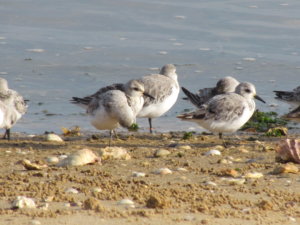
Sanderling (Calidris alba) with Dutch ring
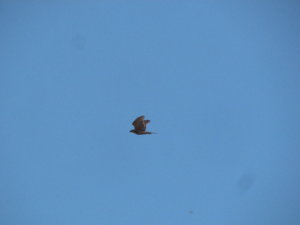
Godshawk (Accipiter gentilis)

Osprey (Pandion haliaetus)
- On our last ringing day of 2020 (17th December) we caught a Wryneck (Jynx torquilla), what a nice way to finish our 2020 bird ringing campaign!!



Birds are one of the most important groups of animals, they can be found anywhere from the Artic to the deserts, on the highest mountains and far away in the Oceans; they are the most widely spread living beings after the microorganisms (bacteria). They are attractive due to their colours and beautiful songs and they make us feel happy! Some have got used to human presence. Where ever I go I can’t stop looking at birds… Walking around Lagos, I saw a Black Redstart (Phoenicurus ochruros), jumping over an old house wall; while I was waiting, I had the company of a Yellow Legged Gull (Larus michaelis), I thought it couldn’t fly! It was just walking around waiting for an easy meal (the cleaning lady just came out with the rubbish bag!). Close to the river the Turnstones (Arenaria interpres) were feeding and they didn’t seem to care about me; on the other side the Cormorants (Phalacrocorax carbo) were diving between the fancy marina boats and the Sandwich Terns (Thalasseus sandvicencis) dancing in the sky. All over the city, the sound of the House Sparrows (Passer domesticus) “socializing” and the Spotless Starlings (Sturnus unicolor), pretending to be someone else! Birds are just lovely creatures!
Filipa
Deer’s part 3
Family: Cervidae
The Cervidae Family includes the ungulates ruminants, like the red deer and the reindeer; the main characteristic, is the existence of antlers instead of horns. The antlers are ossified structures which grow every year, generally in males. Deer’s are herbivorous with a specific diet, their stomach isn’t specialized, and they can’t digest fibrous plants, like grass, feeding mainly of sprouts, leaves, fruits and lichens. Deer’s are not domesticated animals and through Human history they played an important role as a hunted animal and food source.
In Portugal it is possible to find 3 different species of deer: the red deer, the roe deer and the fallow deer.
Fallow Deer (Dama dama)
Distribution: Western Palearctic region: Turkey, Iran and South of Europe (Italy, Sicily and Balkans), Western Mediterranean, North and Central Europe. Introduced in South Africa, Australia, New Zealand, North and South America.
Habitat: wide variety of habitats, pine woods, cork oak woods, Mediterranean open woodlands, deciduous forests and open grasslands, dry and hot climates.
Life span: 16 years (but normally much less)
The Fallow Deer (Dama dama) is a size between the Red Deer and the Row Deer; males are usually bigger than females, can weigh between 35 to 52 Kg (females) and 46 to 80 Kg (males) and can measure in length around 130 cm (females) and 150 cm (males). Like in other deer’s the males have antlers and the females not; the antlers are broad and palmate, shedding at the end of March/April and being completely re-grown by June/July. The complexity and size of the antlers increases with age, in younger males (up to 2 years) the antler is a single spike. The anal shield (which enables to identify the deer’s species) it’s more elaborate, with the shape of an inverted anchor, its white and delimited by 2 dark lines, crossed by the long dark tail in the middle. In summer the coat is red brown with white patches in the back and sides, the belly is white, in winter it is greyish and darker and the patches are not so visible. Along the back is a visible sepia colour line which gets darker towards the tail.
 The breeding season is in autumn (September/October), according to the latitude; males can be fertile for at least 6 months. The species is polygamous and the males congregate in’ leks’, marking territory, competing with other males and then they court the females. Copulation is fast and gestation lasts for 8 months. Females give birth to a single fawn (baby Fallow deer) in the end of spring (May/June) and only females are responsible for parental care. Outside the breading season, the Fallow deer is non-territorial and is a gregarious species, the size of the groups can vary with the kind of habitat. Normally males gather in smaller groups with other sub-adults and juvenile males, females are together with other females and their young.
The breeding season is in autumn (September/October), according to the latitude; males can be fertile for at least 6 months. The species is polygamous and the males congregate in’ leks’, marking territory, competing with other males and then they court the females. Copulation is fast and gestation lasts for 8 months. Females give birth to a single fawn (baby Fallow deer) in the end of spring (May/June) and only females are responsible for parental care. Outside the breading season, the Fallow deer is non-territorial and is a gregarious species, the size of the groups can vary with the kind of habitat. Normally males gather in smaller groups with other sub-adults and juvenile males, females are together with other females and their young.
The Fallow Deer is a grazing herbivorous but also can feed on sprouts and fruits. Feeding period is mainly at dawn or sunset and the diet can vary according to the season. In winter can eat heather, holly, roots and cereals.
In Portugal, some decades ago there were no wild populations of this specie, except some scattered individuals escaped from captivity. Nowadays they are several wild populations and in some places are considered a pest due to the lack of natural predators (Iberian Wolf and Iberian Linx). It is a hunting species.
POPPED UP
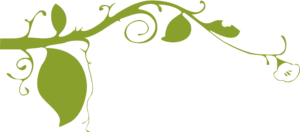
Family: Valerianaceae
Identification: It is an herbaceous annual plant with branched stems, up to 0.2 mts. The leaves are oval and slightly toothed, growing in pairs from the stem. The flowers grow in clusters on top of the stalks, small with a purple colour and with long corolla tubes; it flowers from February to May.
Habitat and distribution: cultivated areas, waste ground, pastures, traditional orchards (carob tree, olive). Native from Mediterranean Region and Northwest Africa. In Portugal it is present in the Centre and South region.
Notes: The species is hermaphrodite (both male and female organs in the same flower) and is pollinated by insects. The plant grows in clayish soils and preferably of limestone origin.
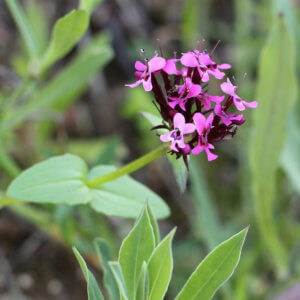
Fedia cornucopiae (L.) Gaertn.
DATES TO REMEMBER

1st of January – New Year’s Day/Public Holiday
7th, 14th, 21st and 28th January – Cruzinha Birdringing display & Moth Talk (10am to 12 am) Book here
6th of January – Kings Day (Twelfth Night, down come the decorations)
Thank you for supporting the Friends of A Rocha Portugal

Dr Roy Rodrigues
Av. Do Brasil, Qta das Palmeiras, Lt P2, R/c A, 8500-299 Portimão
(+351) 282180683
royaldente@gmail.com

Sítio da Amoreira, Lote 12,
Alvor, 8500-045 Portimão
(+351) 282412562/ 925433047
www.transfair.com.pt
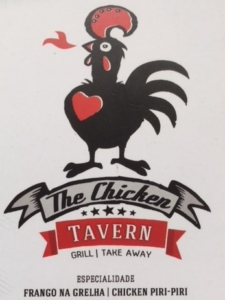
Urbanização Mar e Serra n° 47, Alvor
8500 – 783 Portimão
(+351) 911597735
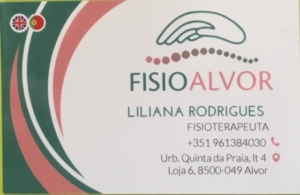
Physiotherapy, Massages (relaxation, sports, therapeutic)
Other therapies
Beauty (manicure, pedicure, hair removal, facials)
Open Monday to Friday
We would like to thank our small business supporters for continuing to support us in these difficult times.
As Friends please try to support these small businesses in 2021.
Thought of the month 
“Times change, as do our wills,
what we are – is ever changing;
all the world is made of change,
and forever attaining new qualities.”
Luís Vaz de Camões, Sonetos de Camões (Portuguese language greatest poet, 1524-1580)
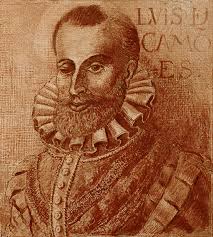
LETS BE GREEN – LETS BE GREEN – LETS BE GREEN 
Gestures which make a difference!
Food
- Choose local and national products (the transport of goods, especially by plane is heavily pollutant and can lead to a lot of waste of fresh goods)
- Choose meat of animals raised outdoors, the same for eggs of chicken raised outdoors (it is better for the animals and also for people, the quality and hygiene of the products are much higher)
- Reduce the meat consumption, choose fish or cereal based products
- Do not buy fish of a very small size (these didn’t have the chance to reproduce)
- Avoid fish species that are over exploited (like codfish)
- Choose tuna with the “Dolphin safe” certificate (it makes sure the dolphins are not being killed during fishing for tuna)
- Avoid products with food colours: E100 – E180, E220, E320, E321 and E621 (food colours are unnecessary and harmful to your health)
- Avoid chewing gum (use instead sweet drops which don’t leave waste)
- Avoid buying bottled water (tap water its 600 times cheaper and saves the use of plastic)
- Avoid buying tea bags and use fresh tea leaves (reduces the amount of bleached paper)
- Use as many fair trade products as possible (products which respect the environment and pay a reasonable amount to the producers)
LETS BE GREEN – LETS BE GREEN – LETS BE GREEN
Environmental volunteering for the Water Quality Project (APA/ARH – Environmental Portuguese Agency/ Administration of the hydrographic region of Algarve)
The aim of this project is to evaluate the water quality and to contribute to the management and protection of the sweet water and marine ecosystems. The monitoring (repeated measurement and observation of natural phenomenon), is a process used to detect changes in certain systems, allowing the control and prevention, if needed.
Everyone can take part in this volunteering project. For more information check the website here (only in portuguese).
A Rocha has taken part in this project since 2013 and its “target” place is the Alvor Estuary; we have received merit awards every year and are recognised as ‘ambassadors’ for the project since 2018. Every year the benthonic macroinvertebrates monitoring is done on this site. “Soil” samples are collected from the estuary, on the subtidal area, during the low tide: the samples are sifted using a mesh 0.5 mm net, to remove the finest sediment. The remaining material is collected, selected and we identify the living being species present in the sample.
What are Macroinvertebrates?
Macro- visible with naked eye; Invertebrates – without a spine
Macroinvertebrates can be: Crustaceans (crabs, shrimps), Molluscs (cockle) and Worms.
This year the monitoring was done in November and there were 22 different species identified. Here are some of the species.
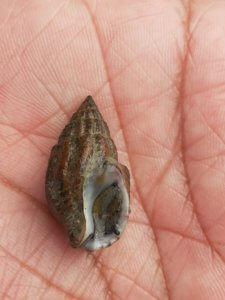
Phylum: Molusca
Class: Gastropoda
Family: Nassariidae
Nassarius reticulatus

Phylum: Artropoda
Sub-phylum: Crustacea
Order: Amphipoda
Family: Corophiidae (it was not possible to identify this species)

Phylum: Molusca
Class: Gastropoda
Family: Haminoeidae
Haminoea orbignyana
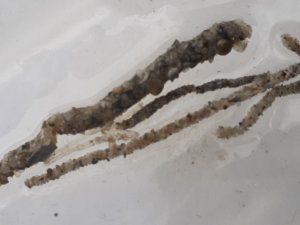
Phylum: Annelida
Class: Poychaeta
Family: Oweniidae (it was not possible to identify this species)
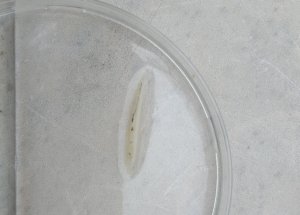
Phylum: Chordata (this is not an invertebrate)
Sub-Class: Amphioxiformes
Family: Branchiostomatidae
Species: Branchiostoma lanceolatum
This project is managed by Isabel Soares (Bebé), Environmental Education Officer.
Sustainability Champions 
Sustainability Champions from around the World– Looking at ways to curb pollution and waste management.
We would like to thank Daniel Hartz, the founder of Sustainability Champions for giving us the permission to share this information.
Taylor Lane – Los Angeles, California USA 
Taylor collected 13,000 cigarette butts from beaches and aimed to raise awareness about ocean pollution, he won a recycling contest with his entry – a surfboard made from cigarette butts.
Taylor an industrial designer, collected all the cigarette butts, and after countless hours sifting through the butts, removing the tobacco, he built a wooden frame with a centre stringer and cross sections. He mixed the cigarette butts with glue and mashed together the old filters into a solid bottom layer, he used them for the top and bottom layer.
For a middle layer, he used discarded Styrofoam coolers from fish markets, in order to reduce weight and add buoyancy in the core. A top layer of cigarette butts was pounded into place and EPS rail cut-offs from local surfboard shapers were used around the perimeter of the board. Taylor even put a layer of cigarette filters in the fins, which were made from left over fiberglass scraps from local surfboard glassers. He used entropy resins (soya based) to glass and seal the surfboard, which is a much more sustainable and less toxic material than traditional resin.

Check the website for dates for organised tours
PEEC 2010-2020
Since 2010, A Rocha Portugal has been involved in the PEEC (Programa de Estação de Esforço Constante, or Constant Effort Site). This means that the same ringing effort is done every week, between March 25th and July 22nd. Birds are caught in the 10 mist nets around Cruzinha between sunrise and 12h30.
Every year, 17 ringing sessions have been completed, except in 2010 when 18 sessions happened and 2020 when only 16 sessions were completed as it rained on a Thursday which is not suitable for ringing. This allows us to have a closer look at the quantity of birds caught, their diversity and the most common species caught at Cruzinha. For this article, only birds caught for the first time have been included and juveniles refer to birds born during the study period.
The average number of species caught during these 11 years is 22 and 6 years show a higher number of species than the average, with a tendency to increase even though 2020 was below average (see Graphic 1).
The average number of birds caught during the study period is 218 and 3 years show a higher number of birds than the average, however the last 3 years show a number of birds caught below the average (see Graphic 2).
As the PEEC starts in March and finishes in July, it allows the capture of wintering birds at the beginning and some migrants at the middle and end of the period, some birds going north in April and May and some birds going south in July. The average number of migrant species is 4 and the average number of wintering species is only 2. These 2 categories of birds also show a negative tendency, with numbers decreasing. The most common migrant species caught are the Subalpine Warbler (caught 6 years in 11), Reed Warbler, Melodious Warbler and Pied Flycatcher (all caught 5 years in 11). The year with most migrant was 2011 with 6 species caught (out of the 15 registered) and the worst year was 2014 with no migrant caught during the PEEC. The year with most wintering birds caught was 2012 with 3 species (out of the 4 registered) and the worst was 2017 with no wintering birds caught. The most common species (and this is no surprise for those who have come on a Thursday morning to Cruzinha in winter) is the Blackcap, registered 10 years, and then comes the Common Chiffchaff (registered 5 years).
Since 2017, a species of woodpecker is caught every year; we have ringed 2 Iberian Green Woodpecker and 2 Great Spotted Woodpecker.
Let’s have a look now at some of the most common species caught at Cruzinha (see Graphic 3).
The Iberian Magpie shows a positive tendency, with numbers of juveniles and adults increasing over the year. This confirms what has been noticed in the area and in the Algarve in general(see Graphic 3).
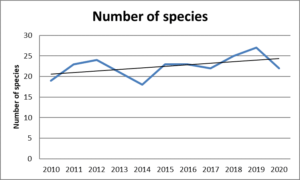
Graphic 1- Total number of species caught between 25th March and 22nd July of 2010 to 2020
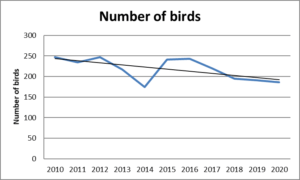
Graphic 2- Total number of birds caught between 25th March and 22nd July of 2010 to 2020

Graphic 3 – Number of Iberian Magpies caught between 25th March and 22nd July from 2010 to 2020
The number of adult Blackbirds has been increasing over the years while the number of juveniles decreasing, possibly showing a lower breeding success, or the desertion of Cruzinha garden by the species for breeding (see Graphic 4 and 5).
Few adults of Sardinian Warblers have been caught during the study period. The tendency for the number of juveniles caught shows stagnation while the general tendency is a slight increase (see Graphic 6).
Short-toed Treecreeper have been caught regularly since 2013 but in small numbers. This species, as the Woodpeckers, shows a clear increase during the study period, possibly linked with the trees growing bigger and being more suitable for these species (see Graphic 7).
Wrens also have been caught regularly since 2013 and also in small number. 23 birds have been caught during the study period and 22 were juveniles. This species which likes “close” habitat shows a positive trend (see Graphic 8).
Another species which should benefit from big trees is the Great Tit, however this species shows a negative trend with fewer juveniles caught every year. This could be linked to a lack of suitable cavities to make their nest. The general trend of the specie is quite similar to the trend for juveniles since few adults are caught (see Graphic 9).
The Waxbill is an introduced species which appeared in Portugal in the 60’s and has been regularly caught at Cruzinha. The number of adults caught has decreased and no juveniles have been caught since 2012 (but they can breed outside the study period). The general trend for this species is a decrease during the study period. However, the real trend can be different since juveniles are sometimes caught in autumn and winter (see Graphic 10).
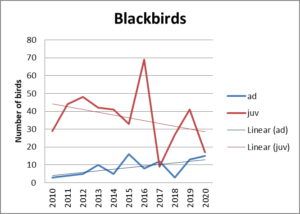
Graphic 4 and 5 – Number of Juvenile and adult Blackbirds caught between 25th March and 22nd July from 2010 to 2020

Graphic 6 – Number of Sardinian Warblers (adults and juveniles) caught between 25th March and 22nd July from 2010 to 2020
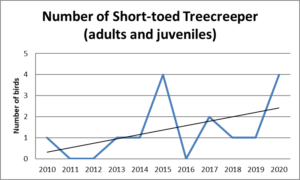
Graphic 7 – Number of Short-toed Treecreeper (adults and juveniles) caught between 25th March and 22nd July from 2010 to 2020

Graphic 8 – Number of Wrens (adults and juveniles) caught between 25th March and 22nd July from 2010 to 2020

Graphic 9 – Number of Great Tits (adults and juveniles) caught between 25th March and 22nd July from 2010 to 2020
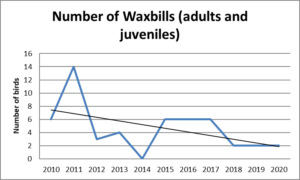
Graphic 10 – Number of Waxbills (adults and juveniles) caught between 25th March and 22nd July from 2010 to 2020
The Hoopoe is an emblematic species for ringing at Cruzinha! Fortunately for our visitors, this species shows a positive trend with juveniles being caught every year since 2016 (and a record of 6 in 2018). On the other hand, adults are caught almost every year (See Graphic 11).
The House Sparrow considered as a common species did not used to be ringed before 2000. However, as some populations started showing huge decrease in some parts of Europe, it was decided to start ringing the birds caught during the ringing sessions to be able to monitor their trend. During the study period, 5 years show a number of adult birds caught above average (including the last 4 years) and a positive trend. On the other hand, the trend for juveniles is negative which makes the general trend for the species also negative. This decrease in number of juveniles could be linked, as for the Great Tit to a lack of cavities to make their nest (See Graphic 12+13+14).
Barn Swallows don’t breed at Cruzinha but nearby, and are caught every year in spring. This species shows a stable trend, but the number of captured individuals may be too small to get to any relevant conclusion (See Graphic 15).
Unlike the Barn Swallow, the Red-rumped Swallow breeds at Cruzinha. This species raised chicks for the first time in 2012 but was only caught from 2014. Even though this species was not caught in 2020, it shows a positive trend with 2014 and 2019 being the best years (4 and 3 birds caught) (See Graphic 16).
Let’s finish with the finches as several species are caught at Cruzinha: Goldfinch, Greenfinch and Serin. The Goldfinch shows a negative trend for both adults and juveniles during the study period with a total number of birds caught below 10 since 2017 (See Graphic 17).
The Greenfinches also show a negative trend even though the number of adult birds caught seems to increase. Since 2016, the maximum number of juveniles caught is only 2 (See Graphic 18+19).
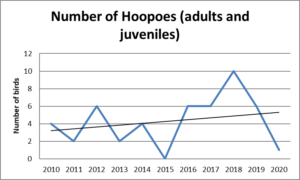
Graphic 11 – Number of Hoopoes (adults and juveniles) caught between 25th March and 22nd July from 2010 to 2020
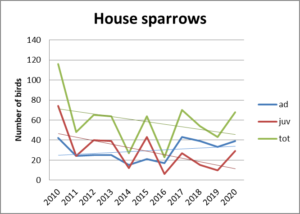
Graphic 12+13+14 – Number of adult, juvenile and both (adult and juvenile) House Sparrows caught between 25th March and 22nd July from 2010 to 2020

Graphic 15 – Number of Barn Swallows (adults and juveniles) caught between 25th March and 22nd July from 2010 to 2020
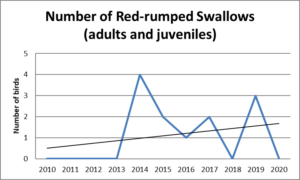
Graphic 16 – Number of Red-rumped Swallows (adult and juvenile) caught between 25th March and 22nd July from 2010 to 2020
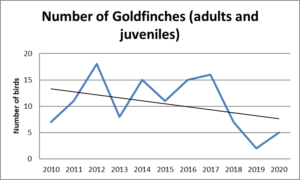
Graphic 17 – Number of Goldfinches (adults and juveniles) caught between 25th March and 22nd July from 2010 to 2020

Graphic 18+19 – Number of adult and juvenile Greenfinches caught between 25th March and 22nd July from 2010 to 2020
Finally, the Serin also shows a negative trend. The adults seem to be decreasing and the juveniles increasing even though none were caught these last 2 years (but over 10 were caught in 2016 and 2107).
Graphic 20+21 – Number of adult and juvenile Serins caught between 25th March and 22nd July from 2010 to 2020
Out of the 14 species studied here, 5 seem to be increasing, 8 decreasing and 1 is stable.
The increasing species are the Azure-winged Magpie, Short-toed Treecreeper, Hoopoe, Wren and Red-rumped Swallow. The Azure-winged Magpie is a generalist species well adapted to humans which is why it is increasing. 3 of these species are “new” species at Cruzinha, which started being caught regularly after 2013. Two of them (Short-toed Treecreeper and Wren) are woodland species, confirming the evolution of Cruzinha garden into a more wooded area (also confirmed by the increase in number of woodpecker caught). The species decreasing are what we usually call “common species” such as House Sparrow, Great Tit, Sardinian Warbler and Blackbirds. All the finches and Waxbills are also showing a negative trend. There can be several explanations such as the lack of suitable places to nest or the lack of food. For the finches, it is interesting to notice that big flocks can be seen outside Cruzinha. These species usually feed on seeds in open fields where they can see their predator. Cruzinha does not offer these conditions to these species anymore hence their disappearance from here. Another explanation to the decrease of these species could be the accumulation of bad breeding seasons due to the weather.
Graphics and text by Guillaume Réthoré
If you have any queries please do not hesitate to contact us:
friends.arpt@arocha.org
Visit us on our open day: Thursdays from 10:15 to 12:00 am
See map: https://arocha.pt/en/contact-us/
GPS coordinates
37°08’39.8″N (37.1444) 8°36’29.2″W (-8.6081)
(+351) 282 968 380
Thank you for supporting us!
Hope to see you soon!


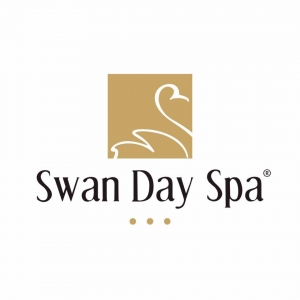
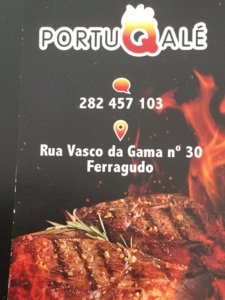

 It’s never too early to think about what you will give as a present to someone for their Birthday. What about Gifting a Friendship for the Friends of A Rocha Portugal?
It’s never too early to think about what you will give as a present to someone for their Birthday. What about Gifting a Friendship for the Friends of A Rocha Portugal? 